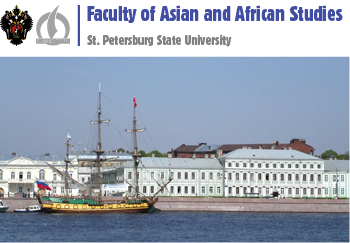Roerich’s heritage: an artist, a philosopher, an archaeologist and a graduate of St Petersburg University
On the anniversary of the birth of Nicholas Roerich, St Petersburg University opened an international scientific and practical conference ‘Roerich’s Heritage’. This year the event was dedicated to the 145th anniversary of the world-famous artist and was held in St Petersburg for the 19th time.
Experts from Russia, USA, India, Ukraine, and Mongolia met in the buildings of St Petersburg University, the Hermitage, and St Petersburg State Roerich Family Museum and Institute. They discussed the influence of Nicholas Roerich’s talent on fine arts, fiction, science, philosophy and law. One of the key questions raised at the conference was about the influence of the so called Living Ethics of the Roerichs – a unique philosophy – on modern society.
Igor Tikhonov, professor of the University, opened the conference by saying: ‘Having finished school, Roerich went on to study at St Petersburg University at the faculty of law and the faculty of history and philology simultaneously. He succeeded in combining all his academic interests: archaeology, Russian and Scandinavian antiquities, and painting.’ Here, at the University, the artist defended his graduation academic paper ‘Legal status of artists in Old Russia’.
Despite the fact that Roerich chose a different career, the mindset he acquired at the Faculty of Law was reflected in his work as a social activist. His values formed the international Treaty on the Protection of Artistic and Scientific Institutions and Historic Monuments or Roerich Pact (or ‘Banner of Peace’).
This pact laid the foundation of many legal documents of modern international law and of collaboration in the sphere of the protection of the cultural heritage. His ideas were developed in: the UNESCO Universal Declaration on Cultural Diversity; the UNESCO Declaration Concerning the Intentional Destruction of Cultural Heritage; the UNESCO Convention on the Protection and Promotion of the Diversity of Cultural Expressions; and other international documents.
Not only was Nicholas Roerich the subject of discussion at the conference, but also his family: his wife, Helena Roerich; and his sons – George de Roerich an Eastern scholar, and Svetoslav Roerich an artist. According to the chairman of St Petersburg regional branch of the National Roerich Committee, Mikhail Chiriatev, it was a truly ingenious family.
They were people who devoted themselves to beauty and who even in times of trouble managed to generate brilliant and profound ideas aimed to save the world and humanity. They were people who were devoted to the light. They were very hard-working. Nicholas painted more than six thousand canvases.
The chairman of St Petersburg regional branch of the National Roerich Committee, Mikhail Chiriatev
Members of the conference underlined that the heritage of Roerich is an integral part of both Russian and world culture, and that it is still being studied in Russia and abroad. For example, in St Petersburg there is the St Petersburg State Roerich Family Museum and Institute. A group of young enthusiasts had been developing the idea of creating a Roerich centre in St Petersburg. In 2001, it was founded in St Petersburg University and became a prominent museum and institute. The museum studies the heritage of Roerich, the Roerich’s family, and their circle of friends.
From 2003 to 2010, the Museum donated 24 copies of Nicholas Roerich’s canvases to the University. They are on display in the library reading hall of the Faculty of Law on the 22nd Line of Vasilyevsky island.
- Category: News
- Hits: 1072




